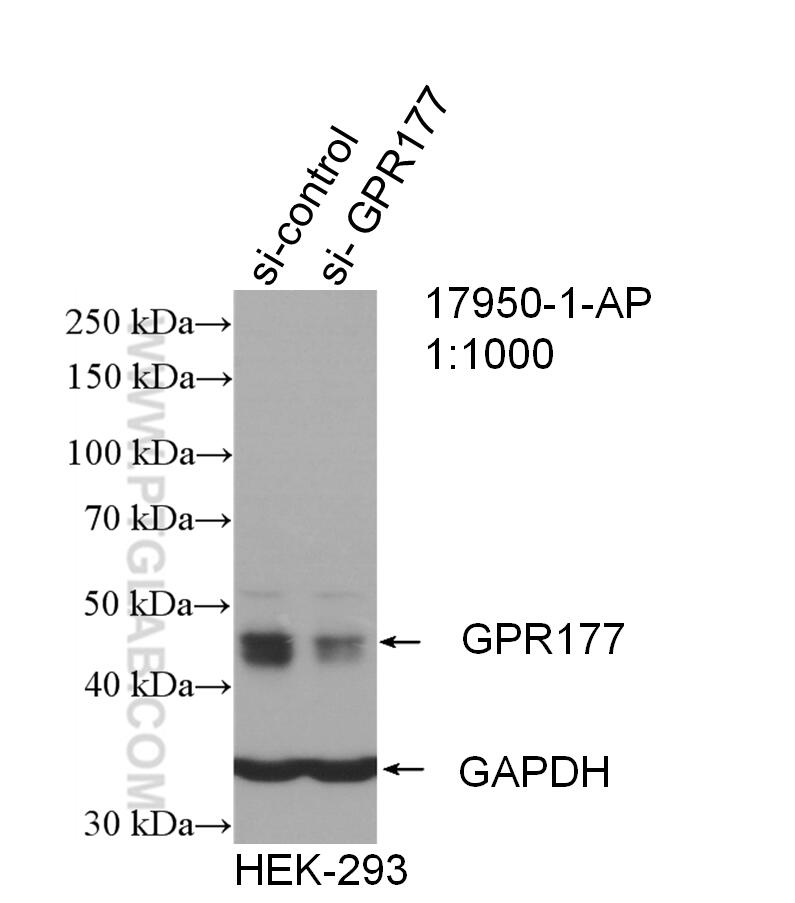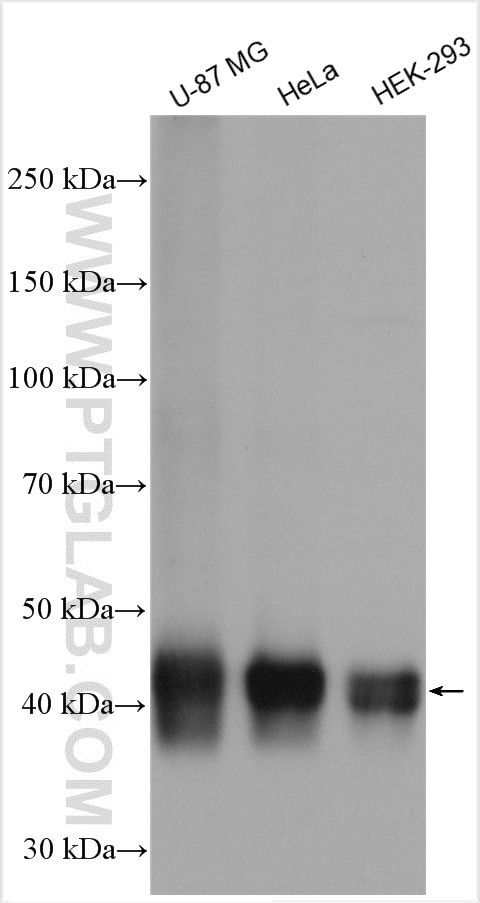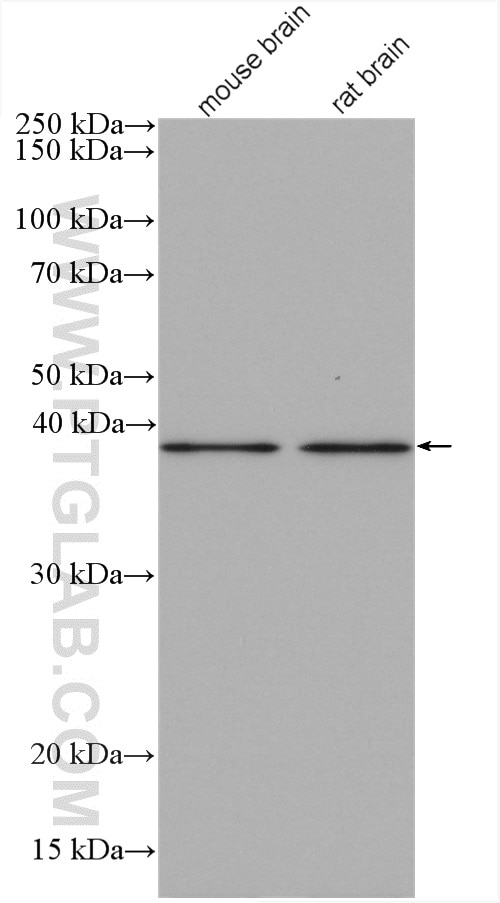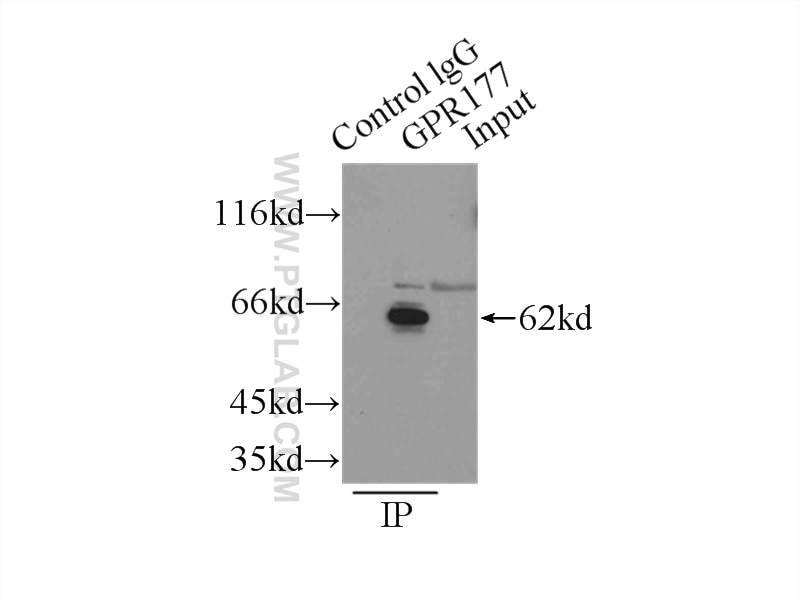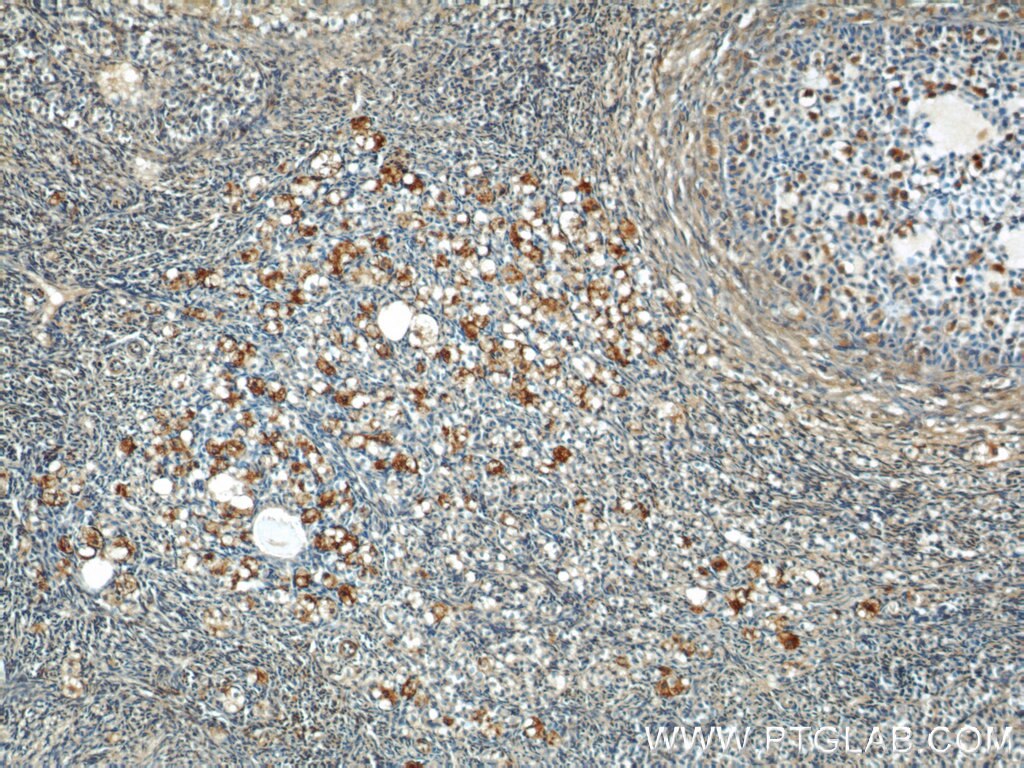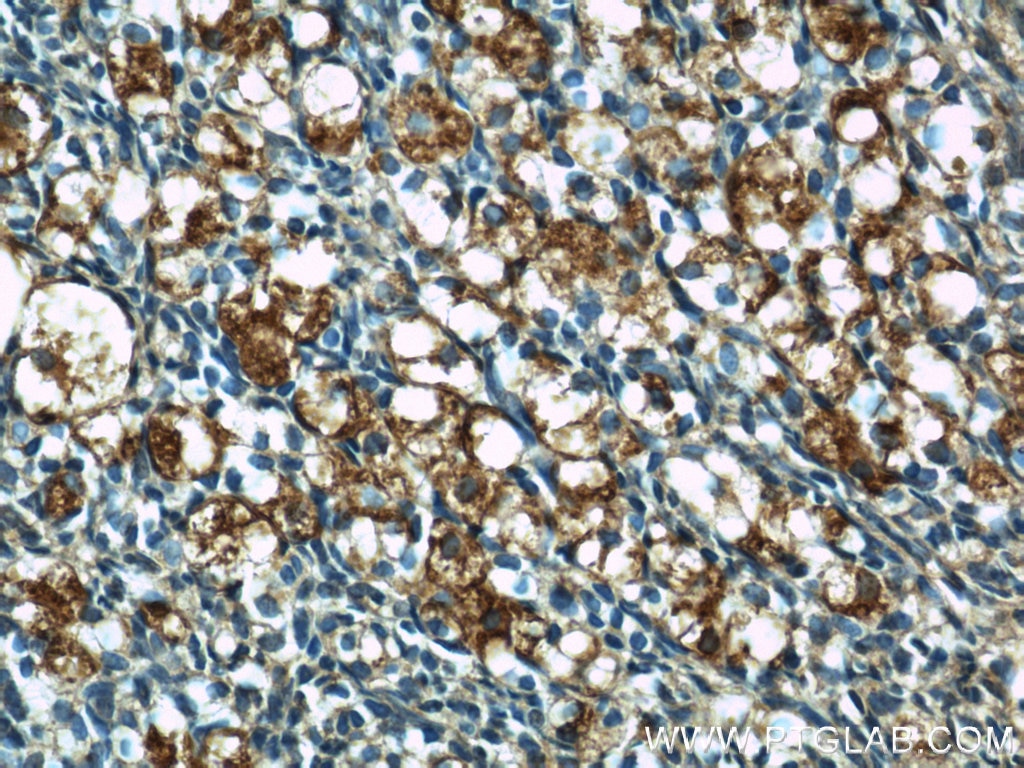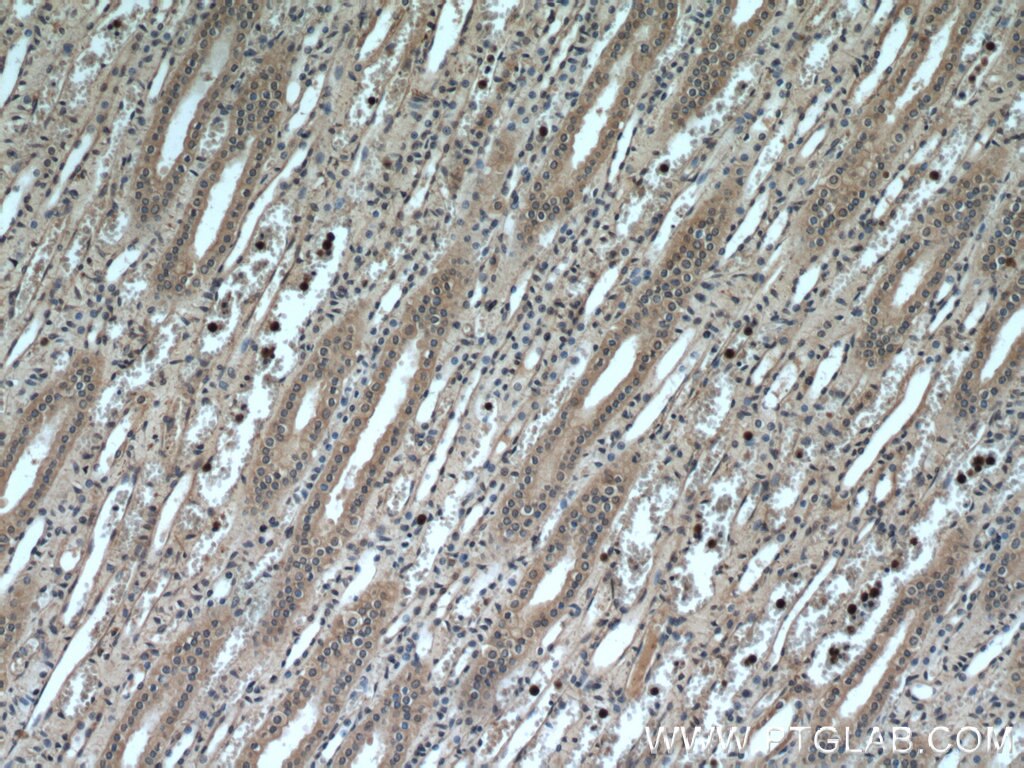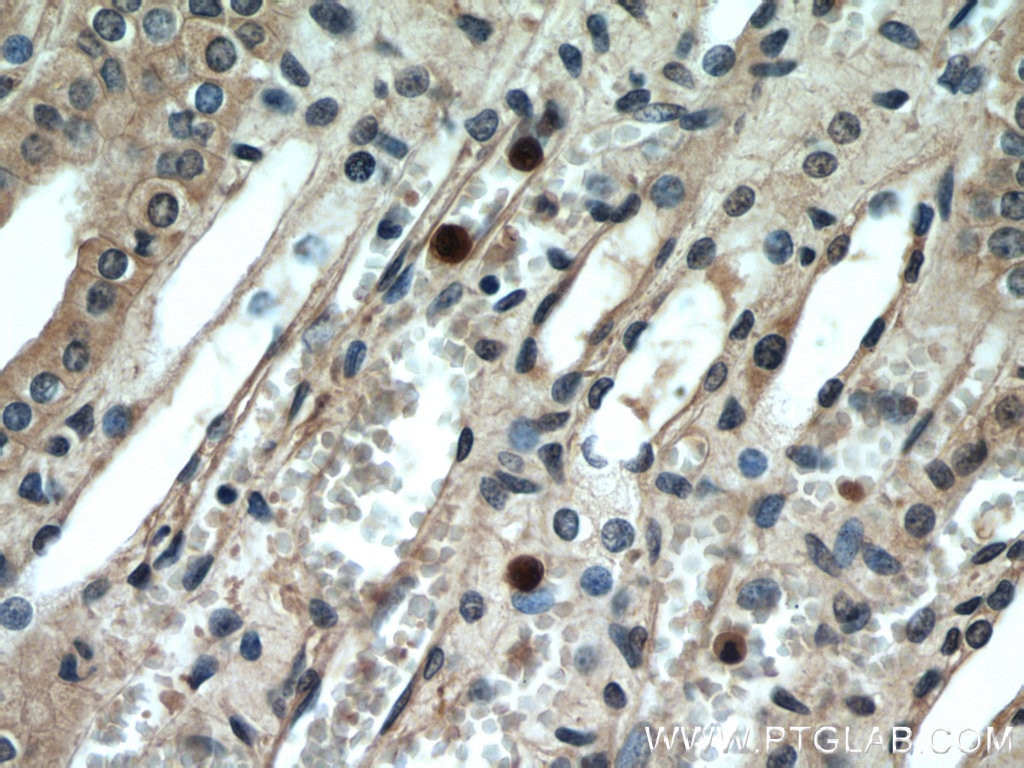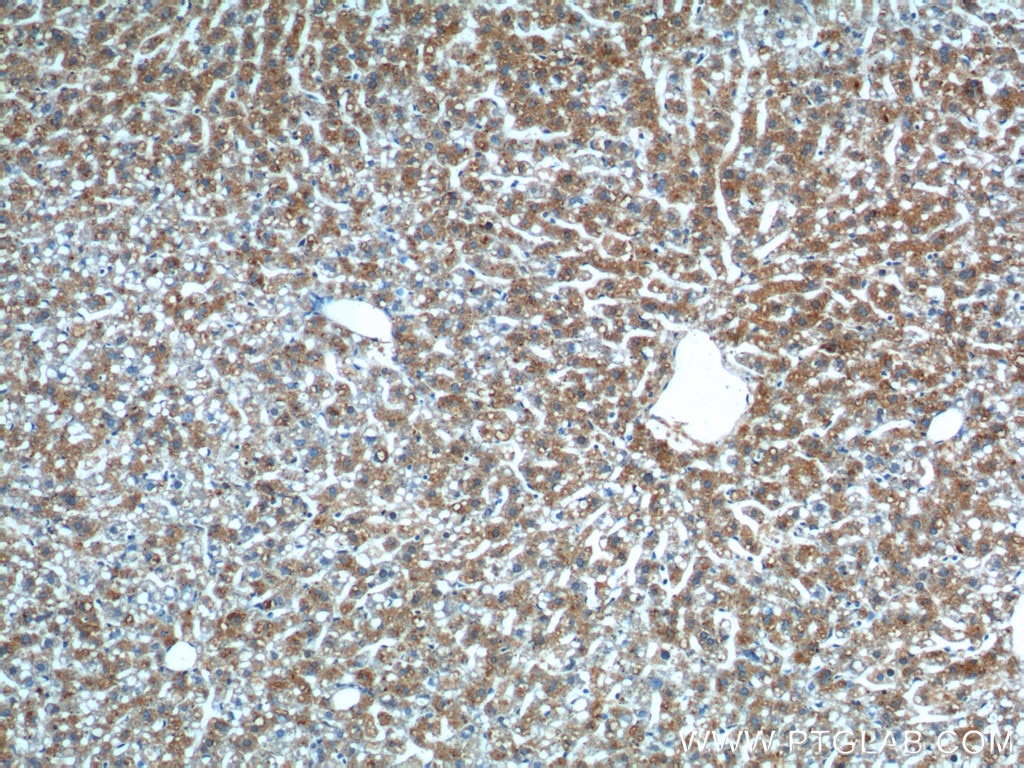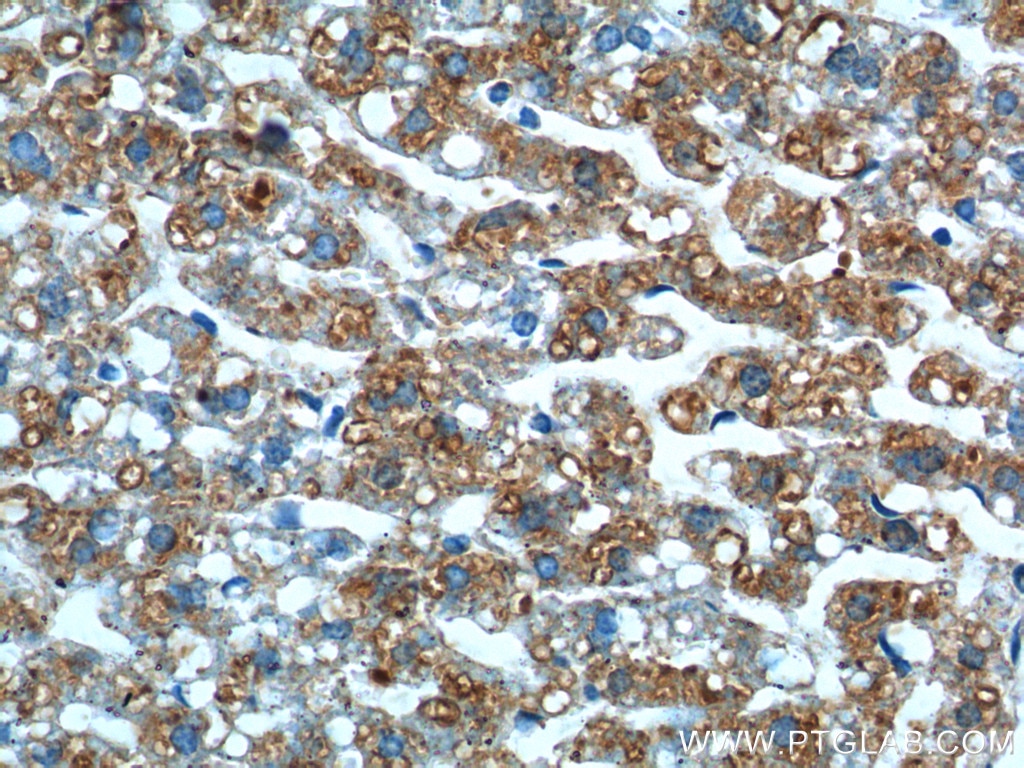Tested Applications
| Positive WB detected in | U-87 MG cells, mouse brain tissue, HEK-293 cells, rat brain tissue |
| Positive IP detected in | mouse liver tissue |
| Positive IHC detected in | human ovary tissue, mouse liver tissue, human kidney tissue Note: suggested antigen retrieval with TE buffer pH 9.0; (*) Alternatively, antigen retrieval may be performed with citrate buffer pH 6.0 |
Recommended dilution
| Application | Dilution |
|---|---|
| Western Blot (WB) | WB : 1:1000-1:5000 |
| Immunoprecipitation (IP) | IP : 0.5-4.0 ug for 1.0-3.0 mg of total protein lysate |
| Immunohistochemistry (IHC) | IHC : 1:50-1:500 |
| It is recommended that this reagent should be titrated in each testing system to obtain optimal results. | |
| Sample-dependent, Check data in validation data gallery. | |
Published Applications
| WB | See 7 publications below |
| IHC | See 4 publications below |
| CoIP | See 1 publications below |
Product Information
17950-1-AP targets GPR177 in WB, IHC, IP, CoIP, ELISA applications and shows reactivity with human, mouse, rat samples.
| Tested Reactivity | human, mouse, rat |
| Cited Reactivity | human, mouse, rat, goat |
| Host / Isotype | Rabbit / IgG |
| Class | Polyclonal |
| Type | Antibody |
| Immunogen |
CatNo: Ag12428 Product name: Recombinant human GPR177 protein Source: e coli.-derived, PGEX-4T Tag: GST Domain: 34-239 aa of BC110826 Sequence: LIAPGPTTAVSYMSVKCVDARKNHHKTKWFVPWGPNHCDKIRDIEEAIPREIEANDIVFSVHIPLPHMEMSPWFQFMLFILQLDIAFKLNNQIRENAEVSMDVSLAYRDDAFAEWTEMAHERVPRKLKCTFTSPKTPEHEGRYYECDVLPFMEIGSVAHKFYLLNIRLPVNEKKKINVGIGEIKDIRLVGIHQNGGFTKVWFAMKT Predict reactive species |
| Full Name | G protein-coupled receptor 177 |
| Calculated Molecular Weight | 541 aa, 62 kDa |
| Observed Molecular Weight | 46-65 kDa |
| GenBank Accession Number | BC110826 |
| Gene Symbol | GPR177 |
| Gene ID (NCBI) | 79971 |
| RRID | AB_2034928 |
| Conjugate | Unconjugated |
| Form | Liquid |
| Purification Method | Antigen affinity purification |
| UNIPROT ID | Q5T9L3 |
| Storage Buffer | PBS with 0.02% sodium azide and 50% glycerol, pH 7.3. |
| Storage Conditions | Store at -20°C. Stable for one year after shipment. Aliquoting is unnecessary for -20oC storage. 20ul sizes contain 0.1% BSA. |
Background Information
GPR177, also known as Wntless (WLS) or Evi, is an evolutionarily conserved transmembrane protein necessary for Wnt protein secretion. GPR177 localizes to compartments of the secretory pathway, including the ER, Golgi apparatus, endosomes, and plasma membrane. GPR177 is overexpressed in several cancer types including glioma and gastric cancer. Several isoforms of GPR177 exist due to the alternative splicing, with predicted MW around 62 and 51 kDa, respectively. The sequence can be processed by removing the signal peptide, which generates a mature form of 45-46 kDa. In addition, slow migragrating band above 62 kDa can also be detected because GPR177 is modified by N-linked glycosylation (PMID: 20549736).
Protocols
| Product Specific Protocols | |
|---|---|
| IHC protocol for GPR177 antibody 17950-1-AP | Download protocol |
| IP protocol for GPR177 antibody 17950-1-AP | Download protocol |
| WB protocol for GPR177 antibody 17950-1-AP | Download protocol |
| Standard Protocols | |
|---|---|
| Click here to view our Standard Protocols |
Publications
| Species | Application | Title |
|---|---|---|
Cell Res Comprehensive profiling reveals mechanisms of SOX2-mediated cell fate specification in human ESCs and NPCs. | ||
Front Physiol A Longitudinal Study of T2 Mapping Combined With Diffusion Tensor Imaging to Quantitatively Evaluate Tissue Repair of Rat Skeletal Muscle After Frostbite. | ||
Onco Targets Ther Wntless (Wls): A Prognostic Index for Progression and Patient Survival of Breast Cancer. | ||
Int Ophthalmol The effect of Wnt/β-catenin pathway on the scleral remolding in the mouse during form deprivation. | ||
Cells Integrative Analysis of Methylome and Transcriptome Reveals the Regulatory Mechanisms of Hair Follicle Morphogenesis in Cashmere Goat. |
Reviews
The reviews below have been submitted by verified Proteintech customers who received an incentive for providing their feedback.
FH MALLIKARJUNA (Verified Customer) (11-13-2025) | good for WB
|

